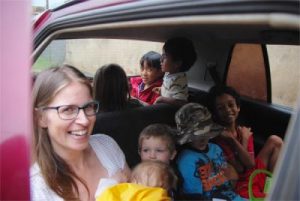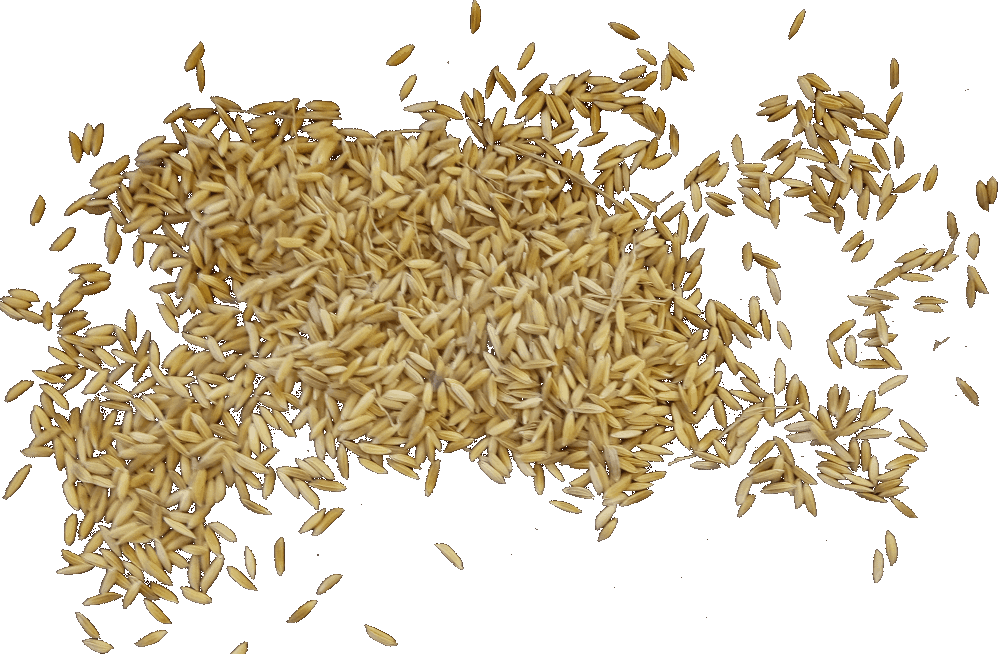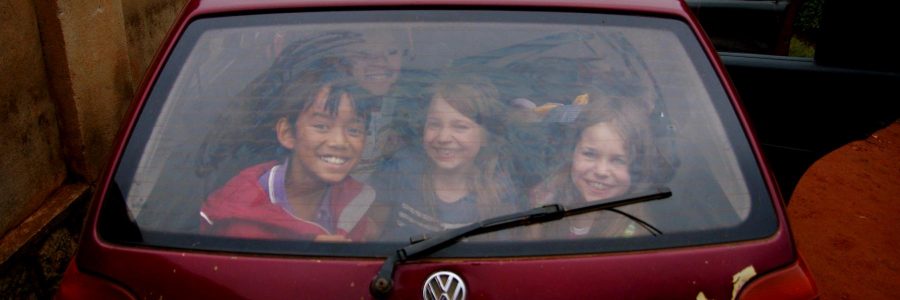We have lived in Tana for almost 2 months now. What is our daily life like? What is different? And what is the same?
Water – Rano
Our house has running water. It is not like that for everyone. There are many who have to go outside to a tap at the roadside. Sometimes it is a public tap, sometimes private (they have a lock).
We cannot count on the water pressure. Now that it is rainy season the pressure is often failing. Because of that we have a store of about 30 litres of water in 2 big lidded buckets in the kitchen. We use the stored water frequently.
We would rather not drink water directly from the tap. There may be too many bacteria, virusses or parasites in it. Many Malagasy also use filtered or bottled water. One of the children’s chores is to fill the waterfilter and the storage buckets.
The water does not taste great. Even after filtering the chloride lingers. The colour is changeable. Sometimes it is more mud than water, but the water is clear most of the time. The filters from the waterfilter do reveal there is always the typical terra cotta dust.
Food – Sakafo
Our eating pattern has not changed much. Most of the foods we are used to are available, although it does cost more trouble to buy the ingredients to bake our own bread. Storebought bread is mostly white and we prefer wholemeal or at least brown bread. We have to travel about 7 miles to buy our favourite bread baking mix and about 14 miles to buy wholemeal.
The Malagasy diet is based on rice. Many families eat it at all meals: vary (rice) with loka (whatever you eat with the rice). Lunch is the main meal of the day. In the evening the leftovers are served. It is easy to buy the ingredients for vary with loka: almost every street has several stalls with vegetables, meat and rice. It is quite cheap to buy food in the street or at the market.
Before preparing fresh food it needs to be washed thoroughly. Sometimes the stalls are not more than a filthy plastic sheet spread out on the ground near a local waste dump or open sewer. We either rinse fresh food with filtered water or we let it soak in water with a drop of chloride. We are relieved this hardly affects the taste of the food.
Laundry – Manasa lamba
The laundry is done by hand. Whoever has a little money can hire a laundry woman – mpanasa lamba – to do the work for him. Washing machines can be bought, but for the same money you can help someone to a part time job for 3 years. We are very happy with our laundry woman as our laundry takes her and Katja more than a full working day a week. The downside of washing by hand is that clothing does not last as long: the scrubbing grates heavily.
The laundry is line-dried. It is clearly visible the sun’s radiation is stronger her: the colours are quickly fading. The other day Jurgen pulled out a black t-shirt and we both remarked we could easily see he had not worn it here yet. The clothes are dry quickly, but often the heavy monsoon rains surprise us – a free extra rinse so to speak.
Transport – Fiara
We do not have our own vehicle – fiara – yet and we are happy for it. Because of our walks and bus rides we make more contact with the people around us and learn more language. People are somewhat surprised to see white foreigners using public transport and we feel it is a witness to them that we respect them and want to be like them.
It is cosy and snug in the bus. Up front near the driver there are 2 seats. Behind the driver there are 5 rows with 2 seats on each side. In the aisle small seats can be lowered or short planks are used as an extra seat. That all adds up to 28 seats. Add to that the driver’s helpers who opens and closes the doors, receives payments and cries out the destination at every stop; quite a few children on people’s laps and the people standing at the back and on the bumper and the capacity of the bus is about 40 people!
When buying groceries at the local market we walk. This is not very healthy or safe: there are no footpaths and smog is filling the air. Some Malagasy cycle, but there are many safety issues there.
 Traveling by normal car is also different. Seatbelts – if there – are hardly being used and there are no children’s car seats. The possible number of passengers is again quite flexible. Only a week ago we saw it no problem to fit 3 adults and 8 children in a car when using the back (a favourite place of our children). It is very baby-friendly: you can drink while traveling!
Traveling by normal car is also different. Seatbelts – if there – are hardly being used and there are no children’s car seats. The possible number of passengers is again quite flexible. Only a week ago we saw it no problem to fit 3 adults and 8 children in a car when using the back (a favourite place of our children). It is very baby-friendly: you can drink while traveling!
Language: Malagasy
Malagasy is very different from European languages, apart from the French words that are being uses like ‘fromage’, ‘olives’ and ‘taxi’. We are happy to find we are remembering more and more words. Syntax and grammar are quite mysterious to us. The subject usually comes last in a sentence. Verbs are only conjugated for the past and future tense. There are many adverbs of place, Malagasy are very precise in these matters. One of Katja’s favourite sentences is: ‘Manana zanaka dimy aho.’ which transliterated says ‘Have own children five I.’
The Malagasy are very happy to hear our limited Malagasy. They even brighten up more when Jurgen tells them he has absolutely no mastery of French. His favourite sentence: ‘Tsy mahay teny Frantsay i aho.’ which transliterated reads ‘Not to be good at language French I.’ The Malagasy are very encouraging when we are using their language. We witness first hand how language learning is a labour and a witness of love. We want to be known as friendly and humble people so we greet everyone we meet. It works: people like to great us back and chat with us, asking where the (other) children are. The market sellers already know we have 5!

